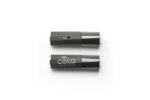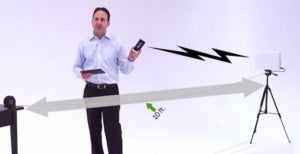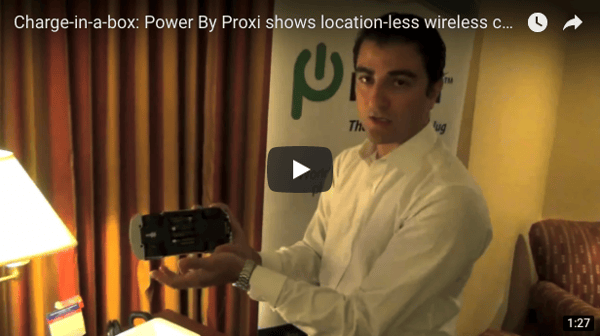Originally posted by Lucas Mearian, Senior Reporter, Computerworld
Wireless charging at distance company Ossia has partnered with electronics manufacturer Molex to boost development of its first products, which it said should be available this year.
Unlike today's most popular wireless chargers, which require devices to rest on a charging pad, Ossia is among several companies developing trickle charging capability at distances of many feet. Some of these technologies, also known as "uncoupled wireless charging" can even charge through walls, or simply top off a device as you enter a room.
Ossia's Cota technology uses radio frequency (RF) to send power and data over distances greater than 15 feet. Cota Transmitters can link to charge dozens of mobile devices within a several meter radius, and the transmitters come in multiple form factors, including a drop ceiling tile.
By linking two Cota ceiling tiles, the system can power mobile devices in a typical coffee shop, office or other crowded spaces, the company claims.
The company has also developed AA batteries that can receive a wireless charge.
In 2013, after six years in development, Ossia unveiled the first of its Cota wireless charging prototypes, a small dongle for smartphone charging; at the time, the company said its technology would be available to consumers and enterprises by 2015. That didn't happen.
Now, Ossia claims that through its new partnership with Molex it should have a product to market by the second half of this year, according to Jennifer Grenz, vice president of marketing at Ossia. Molex, an 80-year-old manufacturer based in Illinois, helped develop the first car radio, the first cell phone and the first HDTV.
Through tiny antennas, Cota-enabled wireless devices can be activated, managed, and monitored via the Cota Cloud networking platform. Cota power receivers are small enough to be embedded into IoT devices, wearables, and many other electronics.

Lily Yeung, vice president of Molex Ventures, said her company first engaged with Ossia two years ago with a round of funding.
Last week, the companies announced a collaborationon next-generation Cota wireless charging antenna designs. The project will include several new patch antenna designs that will service a variety of commercial applications.
Ossia's first products will likely be rolled out for a number of different markets; early adopters will likely be in the Internet of Things (IoT) area where modules and sensors could not only be charged but transmit their data via the Cota technology.
One of the hurdles for untethered wireless charging technology, Yeung said, has been achieving Federal Communications Commission (FCC) approval.
An Ossia competitor, Energous, finally received FCC approval in December when the FCC certified the company's "power-at-a-distance" transmitter.
"That's a good indication regulatory bodies are embracing the technology," Yeung said.

Michael Leabman, founder and CTO of Energous, demonstrates how one of the company's wireless charging routers can send power over distances.
The company claims its Energous WattUp Mid Field transmitter can trickle charge smartphones, watches, speakers and other devices up to 15 feet away.
Like Ossia, Energous has partnered with a large electronics manufacturer, Dialog Semiconductor, to help it distribute its technology.
Yeung sees retail and manufacturing as the most promising markets for Ossia's uncoupled charging technology.
For example, factories use IoT devices to transmit all kinds of data between machinery for production analysis and maintenance. Smart buildings contain hundreds or thousands of sensors for HVAC and other systems, which would be kept charged and connected. Grocery stores use electronic price tags above shelves that could be charged by a wireless router and adjust the price of produce or other perishable items as they age or as sales occur.
"Millions of dollars are lost every year through items being thrown away when they're kept on a shelf too long," Yeung said.
Manufacturing is expected to spend $189 billion on IoT in 2018, according to IDC. By 2021, global IoT spending is expected to total nearly $1.4 trillion as organizations continue to invest in the hardware, software, services, and connectivity that enable the IoT.
Typically, uncoupled wireless charging technology sends low levels of energy (typically less than 1 watt) across a room. Ossia, Energous and uBeam all demonstrated uncoupled charging technology at CES earlier this year.

How wireless charging worksPowerByProwxy
Last September, Apple announced its AirPower wireless charger would be available sometime in 2018. It has remained mum since then. A month after announcing the AirPower charger, Apple purchased New Zealand-based PowerByProxi, whose wireless charging technology can send power to multiple devices, from headphones to remote controls, at the same time. PowerByProxy makes a number of charging device form factors, including a box into which multiple items can be dropped to charge.
As appealing as that may sound for mobile devices, Apple likely hopes to use the technology for a vast array of electronics such as the Apple TV remote control or its own computer mouse - and perhaps even for industrial applications.
Apple has settled on the popular Qi wireless charging specification for its mobile devices - from the iPhone 8 and X smartphones to its Apple Watch and its wirelessly chargeable AirPod ear buds. So, what it may do with PowerByProxi's intellectual property remains to be seen.
PowerbyProxi is a component company, so the wireless chargers it creates for demonstrations are proofs of concept. The company has partnerships with firms such as Samsung, Texas Instruments (TI) and Linear who choose to build hardware based on the working prototypes.
PowerByProxi's latest prototype of wireless charging is the Proxi-Com, which can transmit both power and data, just as Ossia claims its technology can do. Initially, PowerByProxi's wireless device supports three common protocols used in industrial applications: a CAN bus for automobiles, Ethernet and Digital GPIO (general purpose input/output circuit).
Ossia, through a partnership with Stutgart, Germany-based Motherson Innovations, is working on bringing the Cota wireless power system into the interior of private and public vehicles by 2021 to not only deliver continuous wireless power to occupants' personal devices, but various vehicle sensors.

